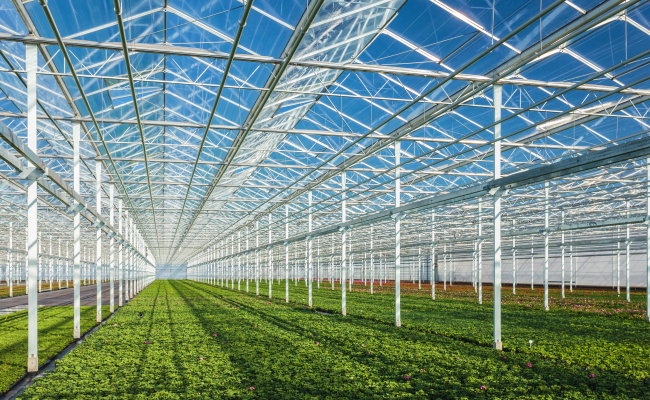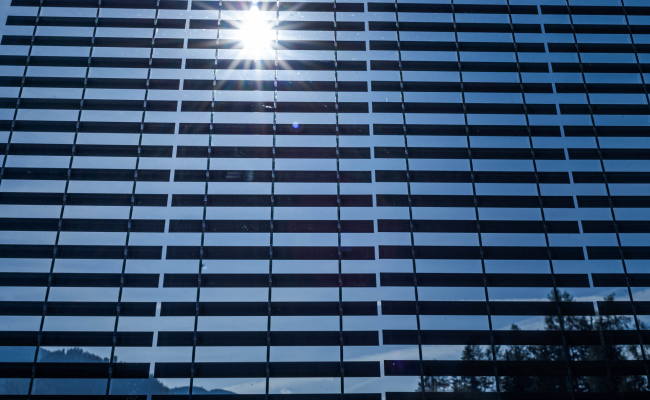Fighting the fade
It’s well known that sunlight causes the dyes in fabrics, paints and other materials to fade over time. However, the reasons behind the effect and the measures homeowners and building designers can take to prevent it are more complex than you might think.
Faded colours in fabrics, paintwork and other materials because of light exposure is rarely a desirable effect and, in some cases, it can be a major issue – in historic buildings, museums or art galleries for example.
Naturally, then, for homeowners and those designing interiors commercially – especially if they will contain light-sensitive items – it can be necessary to limit the effect wherever possible.

There is a widespread belief that using laminated or tinted glass will prevent coloured pigments from fading. However, in reality the cause of the fading and the effect it has on any given item are complex, so there is no one-size-fits-all solution to the problem.
What causes fading?
A material’s colour is caused by its chemical makeup, and specifically by a group of atoms called chromophores. The chemical bonds between these chromophores absorb light at different wavelengths, and this determines the balance of colours reflected by the object, determining its appearance.
Over time, exposure to light causes these bonds to break down, reducing the amount of light absorbed and therefore making the object appear whiter in colour. This effect is known as photodegradation.
While direct daylight typically has the strongest effect because it contains high levels of UV radiation – the most energetic end of the light spectrum – in fact all light, even from artificial sources or having passed through a UV filter, will cause some degree of photodegradation. Of course, the speed at which this occurs varies dramatically depending on the type and duration of exposure and by controlling these factors in the right way, fading can be greatly reduced.
Avoiding washed-out colours
It’s true that glass can help reduce fading, but choosing the best glass for the situation is not as simple as it may appear.
Specifications for glass to reduce fading commonly refer to UV transmittance, with tinted glass generally allowing less UV light to pass through than clear, monolithic glass.
Laminated glass tends to block more UV than tinted glass, due to the presence of the polyvinylbutyral (PVB) interlayer.
For guidance, some typical UV transmittance values are provided in the following table.
| Glass | UV transmittance (%) |
| 6 mm clear glass | 62 |
| 6 mm blue tinted glass | 18 |
| 6.4 mm clear laminated glass | 3 |
| 6.8 mm clear laminated glass | 1 |
| 7.5 mm clear laminated glass | 0 |
For the reasons outlined above, the fading of materials is a complex phenomenon. While some dyes and pigments in materials fade relatively slowly, others can fade very quickly.
As some materials can fade noticeably due to the effect of even visible light, the narrow wavelength band of the UV transmission may not necessarily relate to their anti-fade properties.
Some North American and international standards have tried to address this by introducing more sophisticated parameters such as a damage factor for materials. These evaluate the transmittance of different types of glass not only in the UV region but also for visible light.
However, these have never really become established in Europe and UV transmittance continues to be the most prevalent glass property quoted.
The only way to eliminate 100 per cent of light-induced changes in materials is to protect them from all light. In museums and art galleries, some rather elaborate precautions – such as restricting viewing times and using specially designed low-energy light sources – may be taken. Obviously, these may not be practical in domestic and retail environments.
However, the following are some helpful tips to reduce the risk of fading:
- reduce overall levels of illumination, both daylight and artificial - particularly avoiding direct sunlight;
- use shades or curtains;
- reduce the time for which the material is exposed to the light source;
- reduce the ambient temperature, as fading tends to occur more rapidly at higher temperatures;
- avoid local overheating from lamps;
- reduce exposure to UV light and blue end of the visible spectrum;
- use laminated glass, with as thick an interlayer as possible.
So, while tinted and, in particular, laminated glass can offer considerable benefits in blocking UV light, there is far more to fading than meets the eye, and it’s still important to consider how much light treasured possessions will be exposed to, and for how long each day.






























